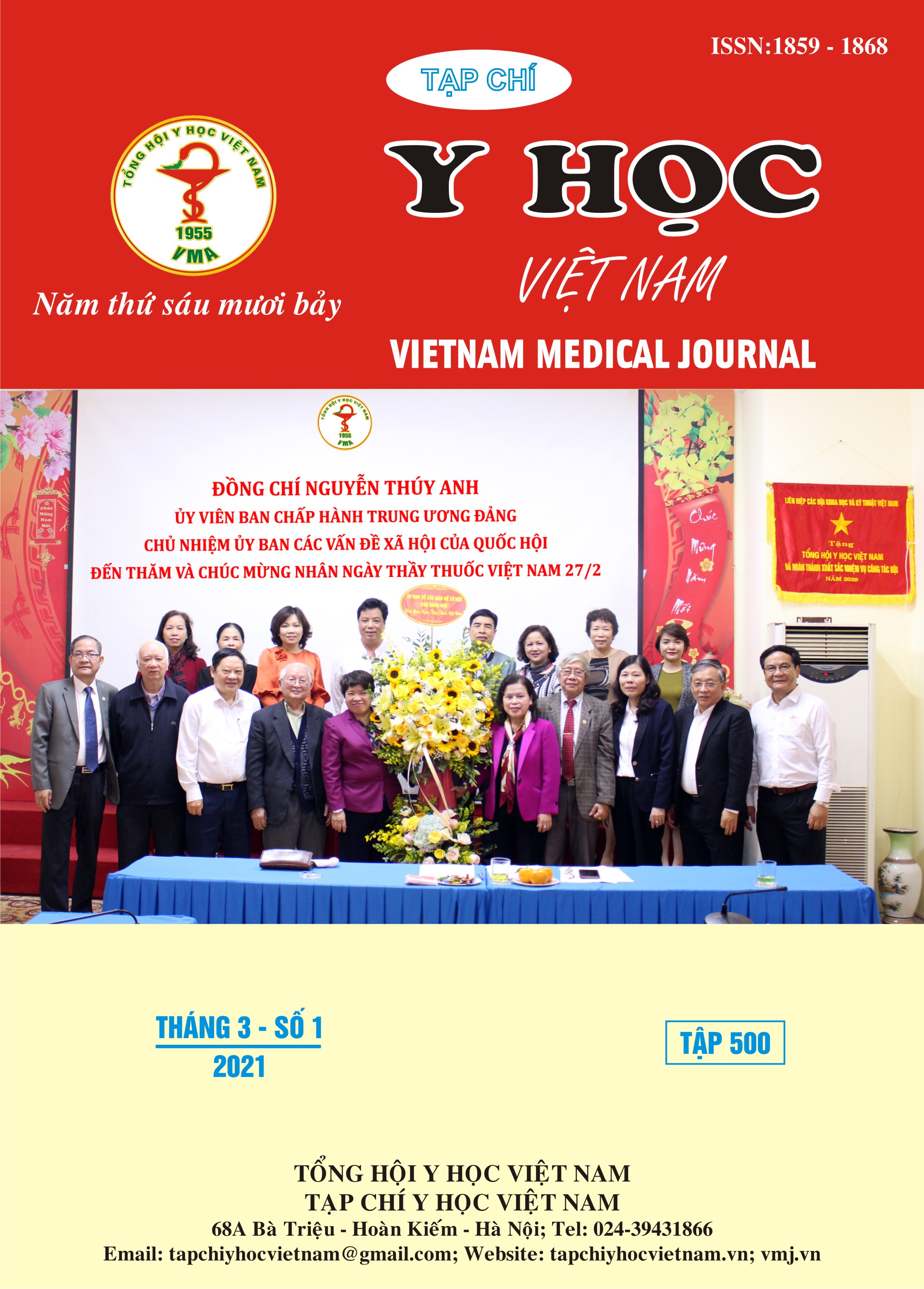RELATIONSHIP BETWEEN IHC4 SCORE AND MOLECULAR SUBTYPE OF POSITIVE HORMON RECEPTOR BREAST CANCER WITH STAGE I-II
Main Article Content
Abstract
Risk stratification and molecular subgroup in BC patients with early stage is very important, in order to provide appropriate adjuvant therapy, to avoid over or under treatment for the patient. Purpose: Evaluation of the association between IHC4 risk groups and the molecular type of positive HR breast cancer with stage I-II. Methods: 226 breast cancer patients were classified in risk and molecular subgroup by IHC stain and evaluating their relations. Results: The low-risk group was the most common in the subgroup luminal A (accounting for 73.7%). In contrast, subtype luminal B HER2 + had the highest proportion (38.0%) in the high IHC4. Conclusion: The low-risk group had the highest proportion in the subgroup luminal A, whereas the high-risk group was mainly found in the subtype luminal B HER2 +.
Article Details
Keywords
Breast cancer, Risk stratification, Molecular subgroup, IHC
References
2. Cuzick J, Dowsett M, Pineda S, et al. Prognostic value of a combined estrogen receptor, progesterone receptor, Ki-67, and human epidermal growth factor receptor 2 immunohistochemical score and comparison with the Genomic Health recurrence score in early breast cancer. J Clin Oncol Off J Am Soc Clin Oncol. 2011;29(32):4273-4278. doi:10.1200/ JCO.2010.31.2835
3. Yeo B, Zabaglo L, Hills M, Dodson A, Smith I, Dowsett M. Clinical utility of the IHC4+C score in oestrogen receptor-positive early breast cancer: a prospective decision impact study. Br J Cancer. 2015;113(3):390-395.
4. Wang M, Chen H, Wu K, Ding A, Zhang M, Zhang P. Evaluation of the prognostic stage in the 8th edition of the American Joint Committee on Cancer in locally advanced breast cancer: An analysis based on SEER 18 database. Breast Edinb Scotl. 2018;37:56-63.
5. Abubakar M, Figueroa J, Ali HR, et al. Combined quantitative measures of ER, PR, HER2, and KI67 provide more prognostic information than categorical combinations in luminal breast cancer. Mod Pathol. 2019;32(9):1244-1256. doi: 10.1038/s41379-019-0270-4.
6. Bakre MM, Ramkumar C, Attuluri AK, et al. Clinical validation of an immunohistochemistry-based CanAssist-Breast test for distant recurrence prediction in hormone receptor-positive breast cancer patients. Cancer Med. 2019;8(4):1755-1764. doi:10.1002/cam4.2049.
7. Gnant M, Filipits M, Greil R, et al. Predicting distant recurrence in receptor-positive breast cancer patients with limited clinicopathological risk: using the PAM50 Risk of Recurrence score in 1478 postmenopausal patients of the ABCSG-8 trial treated with adjuvant endocrine therapy alone. Ann Oncol Off J Eur Soc Med Oncol. 2014;25(2):339-345.
8. Prakash C, Gunda A, Attuluri AK, et al. Risk stratification in early-stage estrogen receptor+/HER2-breast cancer patients: Comparative analysis of cost-effective methods. J Curr Oncol. 2018;1(1):5.


